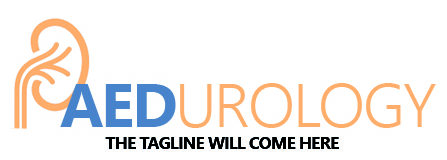One in 1,500 children are born with a urinary tract blockage call Ureteropelvic Junction Obstruction or UPJ. This congenital obstruction occurs where the ureter joins the renal pelvis. This malformation of a muscle develops as the kidney forms in the fetus. It can be commonly diagnosed with a prenatal ultrasound test.
The obstruction blocks adequate flow of urine produced by the kidney to pass from the renal pelvis into the ureter. The excess urine builds up in the kidney and causes a hydronephrosis which is visible on the ultrasound. This observation is the red flag that the child has a UPJ obstruction. This obstruction may be severe (high grade), minimal (low grade) or intermittent.
Unless treated, children may have pain (related to the blockage), urinary tract infection (due to stagnation of urine caused by the UPJ blockage), or kidney stones. The kidney may become damaged if subjected to prolonged blockage and infection.
Most UPJ obstructions are identified before birth because of the widespread use of fetal ultrasound screening. After birth, symptoms of UPJ obstruction may be an abdominal mass, a urinary tract infection with fever, flank pain especially with increased fluid intake, kidney stones and bloody urine. It is possible to have pain without an infection. UPJ obstructions may be irregular. Urine may pass normally for awhile and then completely stop, producing sporadic pain.
An ultrasound is helpful in screening for problems, it does not diagnose UPJ. A test called a lasix (furosemide) renal scan is used. With this nuclear test, dye is injected and absorbed, and once the diuretic is given, scans are used to view passage of the dye. The material is viewed with a special camera as it passes though the kidney to the ureter and gives the physician even more accuracy in diagnosing a UPJ.
Surgery (pyeloplasty) involves removing the UPJ blockage and reconnecting the ureter to the renal pelvis. A tube may be placed across the pyeloplasty (stent) or may be left above the surgery to decompress the kidney (nephrostomy).
Sometimes the UPJ in infants and young children less than 18 months may be temporary. Many infants with good kidney function and poor drainage will have a dramatic improvement of drainage over the first few months of life. Others may not improve or worsen. Because there is a chance of improved drainage without surgery, some infants with hydronephrosis (fluid-filled enlargement of the kidney) are watched with repeat ultrasounds and office visits. Once the diagnosis of UPJ obstruction is established and after 18 months of age, if there is no further reasonable chance of improvement, the condition requires surgical treatment.
The surgery lasts a couple of hours and has a success rate in excess of 95 percent. Post-surgical hospitalization may be required. The incision on the patient is two to three inches long just below the ribs and behind a line that would pass from the patient’s arm to their leg on the affected side.
Newer treatment of UPJ obstruction involves minimally invasive surgery. There are two options, a laparoscopic pyeloplasty and an internal incision of the UPJ. Laparoscopic surgery is done by placing several instruments through the abdominal wall and performing the surgical procedure. This procedure is most often done through the abdominal cavity and has the disadvantage of potentially causing scarring or adhesions within the abdomen. Surgeons also cannot use techniques that are as delicate in a laparoscopic as in an open procedure. The clear advantages of laparoscopic surgery are less pain and nausea especially in older children and adults. Success rates of laparoscopic pyeloplasty approach the effectiveness of open surgery. The second option is to insert a wire through the ureter and use it to cut the tight and narrow UPJ from the inside. A special ureteral drain is left in place for several weeks and then removed. The UPJ heals in a more open manner in most patients but the treatment may need to be repeated and success rates are clearly less than those of open surgery. The advantages of this procedure are less pain and nausea.
After surgery, there is usually swelling of the ureter and continued poor drainage of the kidney for awhile. A functional test is performed a few weeks after the procedure, to evaluate how well the kidney is working. Patients usually recover quickly but some have pain for a few days. A drainage tube may be left in place to help drain the kidney while it heals.
The appearance of the kidney improves over the years, but usually it never looks normal on ultrasound or other studies. A UPJ obstruction almost never recurs. Patients may have a slightly increased risk of developing stones and infection throughout their lives. A child should be monitored for several years after a UPJ surgery to evaluate kidney function and any potential infection.

